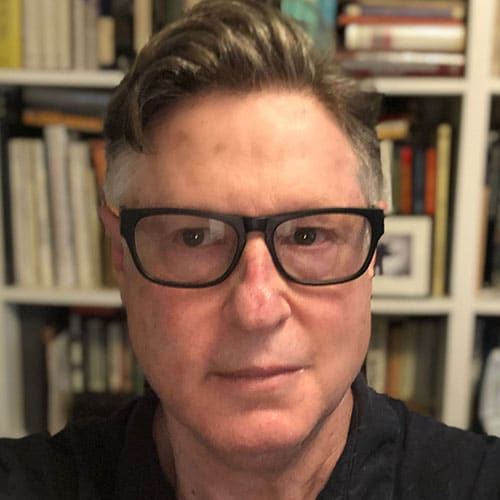Spring is upon us. My allergies have been acting up for weeks. So it seems the right time to talk about cross-pollination, a subject that it is at the heart of important new exhibits in Los Angeles and New York.
When Massachusetts Gov. Michael Dukakis was running for president in 1988, he often talked about his father, a Greek immigrant who had come to this country with no money, had worked very hard and made a considerable fortune. When he was young, Dukakis assumed that by working hard everyone could do the same. Then, one day, he realized that his father was not like everyone else. His father had chosen to come to this country specifically to get an education. His father was motivated to make a better life. And his father had certain abilities that not every one had. In fact, Dukakis was convinced that had you dropped his father into any country — or even on the moon — he would have become a business success. That was certainly true for my father as well.
This came to mind last Sunday when I visited the Skirball Cultural Center’s exhibit “Driven Into Paradise†about Los Angeles’ European Jewish émigrés of the 1930s and 1940s (the exhibit runs through May 8). This fascinating exhibit, organized by Tal Gozani, the Skirball’s associate curator, chronicles the experiences of 10 cultural figures who came to Los Angeles, including composers Ernest Toch and Arnold Schoenberg; writers Vicki Baum (“Grand Hotelâ€), Lion Feuchtwanger (“Jud Sussâ€), Franz Werfel (“The Song of Bernadetteâ€) and Salka Viertel (“Queen Christinaâ€); ceramacist Otto Natzler and his wife, Gertrud; and art promoter Emilie “Galka†Scheyer.
I was a consultant on the Billy Wilder and Michael Curtiz installations, so I am biased, but the exhibit does a great job at showing how these individuals adapted to America and how America adapted to them. I went into the exhibit thinking: How lucky they were to escape Germany/Austria/Hungary! But seeing the exhibit, what became obvious is that these highly talented, highly motivated individuals made their own luck. They all saw the writing on the wall and, unlike many others, they not only could read that writing, they acted upon it. These émigrés were bound to be successful wherever they landed. Wilder and Curtiz, it is clear, would have found their way to Hollywood, one way or another.
Otto Natzler influenced a generation of ceramicists, making an art of what had been a craft in this country. Scheyer introduced the paintings of Kadinsky, Klee and Feininger to the United States (her collection is now part of the Norton Simon in Pasadena). Try to imagine our cultural heritage bereft of “Casablanca†or “Some Like It Hot,†“Song of Bernadette†or “Grand Hotel.†It certainly would have been our loss.
Viertel is also featured prominently in “The Power of Conversation: Jewish Women and their Salons†(at The Jewish Museum in New York through July 10). Curated by Emily Bilsky, the show is a fascinating exhibit on 14 influential Jewish women from the 18th, 19th and 20th century who created salons where people of different classes and artists of all stripes, could sponsor, discuss and support new art and social change. Henriette Herz and Rahel Varhagen’s salons in 1780s Berlin nurtured the new romantic movement, while Fanny Mendelsohn’s music salon welcomed Nicola Paganini, Clara Schumann and also premiered new works including her own compositions. Genevieve Straus in Paris was the close friend and inspiration of Marcel Proust (she was the model for the Duchess de Guermantes), while Gertrude Stein launched modernism in her salon (imagine being in the room when Stein said, “Picasso, meet Matisseâ€). Viertel is featured as the last salonist, and the only one in America, her Santa Monica home the locus where Bertol Brecht could mingle with the Great Garbo, Thomas Mann and Eisenstein on the beach.
What comes through loud and clear is that art does not occur in a vacuum. Lives were being led, and the places and people they interacted with are part of the story of how culture occurs.
Los Angeles is often characterized as paradise or purgatory — the place of exile. A 1999 book edited by Paul Vangelisti with Evan Calbi, “L.A. Exile: A Guide To Los Angeles Writing 1932-1998†(Marsilio, 1999), catalogues writers and artists who graced our shores — from Theodor Adorno, who spent a great deal of time here from 1938-1948, to Tennessee Williams, who living in Santa Monica in 1943, got fired from writing a movie for Lana Turner and used his savings to complete a play he was writing, later to be titled “The Glass Menagerie.â€
The legacy of Feuchtwanger as exile, humanitarian and as salon host lives on in the work of the Villa Aurora Foundation. Each year they award a fellowship for up to 12 months to a writer who is being persecuted or forced to live in exile. On March 22, at Feuchtwanger’s former home in Pacific Palisades, The Villa Aurora, the foundation held a welcoming evening for this year’s fellow, Syl Cheney-Coker, a poet and novelist from Sierra Leone.
Los Angeles is vast and spread out — we all relish the splendid isolation the city affords us, but it is also something we must struggle with. Los Angeles has incubated a few political salons, but where are the music, the writing, the art salons? Certainly guilds and professional organizations, as well as museums and cultural institutions, try to host them. But if history is any indication, it is the will of one person that will determine where the next Picasso meets the next Matisse; where we first hear the works of the next Mendelsohn; and where the Marcel Proust of Hancock Park will find his muse.























 More news and opinions than at a Shabbat dinner, right in your inbox.
More news and opinions than at a Shabbat dinner, right in your inbox.